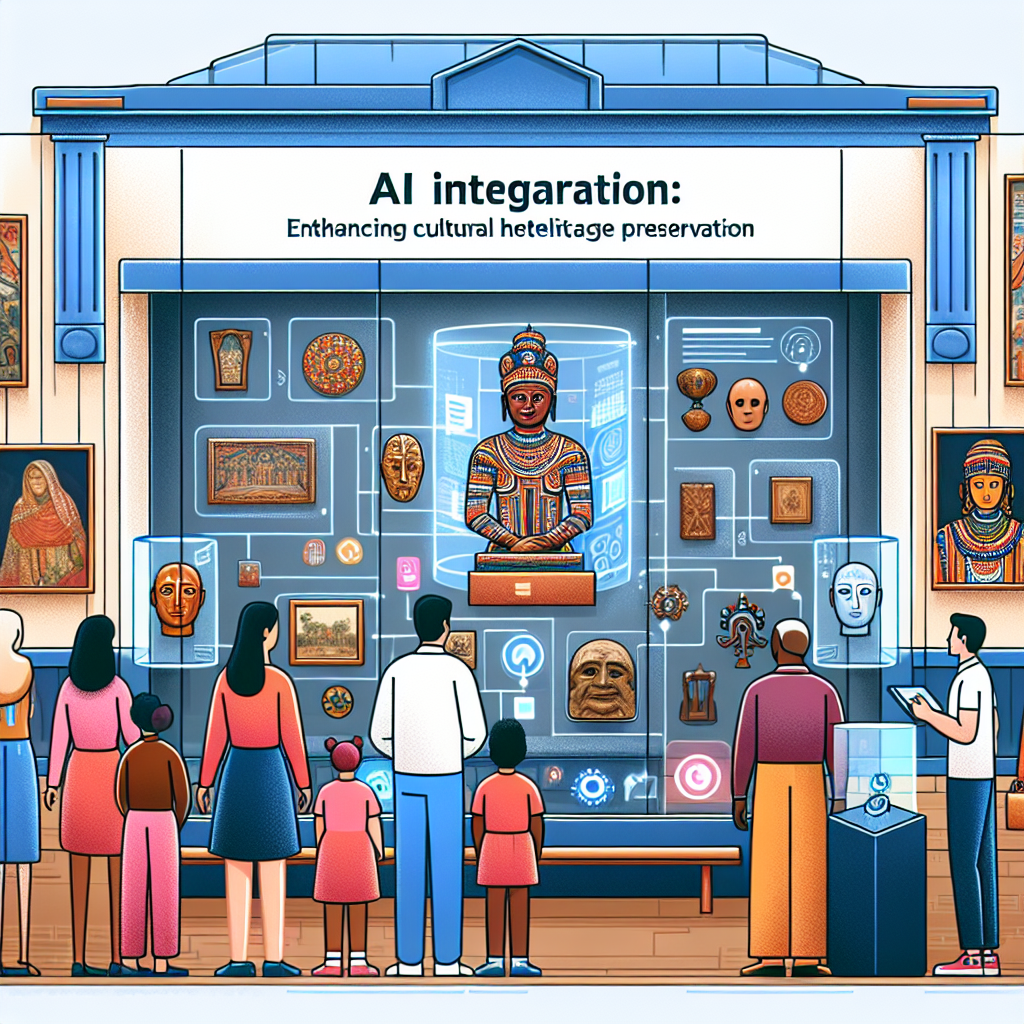AI Integration: Enhancing Cultural Heritage Preservation
Cultural heritage preservation is a crucial aspect of maintaining the identity and history of a society. It involves the protection and conservation of cultural artifacts, sites, and traditions that have significant historical, cultural, or artistic value. With the advancement of technology, artificial intelligence (AI) has emerged as a powerful tool for enhancing cultural heritage preservation efforts.
AI integration in cultural heritage preservation involves the use of machine learning algorithms, computer vision, and natural language processing to analyze, interpret, and preserve cultural artifacts and sites. By leveraging AI technologies, cultural heritage organizations and institutions can streamline their preservation efforts, improve the accuracy of their documentation, and enhance public access to cultural heritage resources.
One of the key benefits of AI integration in cultural heritage preservation is the ability to automate and streamline the process of digitizing and cataloging cultural artifacts. Traditionally, cultural heritage organizations had to manually document and categorize artifacts, which was a time-consuming and labor-intensive process. With AI technologies, organizations can use computer vision algorithms to automatically identify, classify, and tag artifacts based on their visual characteristics. This not only speeds up the digitization process but also helps ensure the accuracy and consistency of the documentation.
AI integration also allows cultural heritage organizations to analyze and interpret large amounts of data related to cultural artifacts and sites. Machine learning algorithms can be trained on historical data to recognize patterns, trends, and anomalies in the data, helping researchers and curators uncover new insights about the artifacts and their cultural significance. This can lead to new discoveries and a deeper understanding of the cultural heritage being preserved.
Furthermore, AI technologies can enhance the preservation of cultural sites by monitoring and predicting environmental threats, such as natural disasters or climate change. By analyzing historical data and real-time sensor data, AI algorithms can identify potential risks to cultural sites and provide early warnings to help mitigate damage. This proactive approach to conservation can help prevent the loss of irreplaceable cultural heritage resources.
In addition to preservation efforts, AI integration can also improve public access to cultural heritage resources. Virtual reality and augmented reality technologies powered by AI can create immersive experiences that allow users to explore cultural artifacts and sites in a digital environment. This not only enhances the educational value of cultural heritage resources but also makes them more accessible to a global audience.
Despite the numerous benefits of AI integration in cultural heritage preservation, there are also challenges and concerns that need to be addressed. One of the main challenges is the potential bias in AI algorithms, which can lead to inaccurate or incomplete interpretations of cultural artifacts. To mitigate this risk, cultural heritage organizations need to ensure that AI algorithms are trained on diverse and representative datasets to minimize bias.
Another challenge is the ethical implications of using AI technologies in cultural heritage preservation. For example, there may be concerns about data privacy and ownership rights when digitizing cultural artifacts. Cultural heritage organizations must establish clear guidelines and protocols for the ethical use of AI technologies to protect the interests of the communities and individuals associated with the artifacts.
Despite these challenges, the integration of AI in cultural heritage preservation holds great promise for enhancing the conservation and promotion of cultural heritage resources. By leveraging the power of AI technologies, cultural heritage organizations can improve the efficiency, accuracy, and accessibility of their preservation efforts, ensuring that future generations can appreciate and learn from the rich cultural heritage of our world.
FAQs:
Q: How can AI technologies improve the preservation of cultural artifacts?
A: AI technologies can automate and streamline the process of digitizing and cataloging cultural artifacts, analyze and interpret large amounts of data related to artifacts, and monitor environmental threats to cultural sites.
Q: What are some of the challenges of using AI in cultural heritage preservation?
A: Some of the challenges include potential bias in AI algorithms, ethical implications related to data privacy and ownership rights, and the need for clear guidelines and protocols for the ethical use of AI technologies.
Q: How can cultural heritage organizations ensure the ethical use of AI technologies in preservation efforts?
A: Cultural heritage organizations can ensure the ethical use of AI technologies by training algorithms on diverse and representative datasets to minimize bias, establishing clear guidelines and protocols for data privacy and ownership rights, and involving stakeholders in the decision-making process.
Q: What are some of the benefits of using AI technologies in cultural heritage preservation?
A: Some of the benefits include improving the efficiency and accuracy of preservation efforts, enhancing public access to cultural heritage resources through immersive experiences, and proactively monitoring and mitigating environmental threats to cultural sites.

